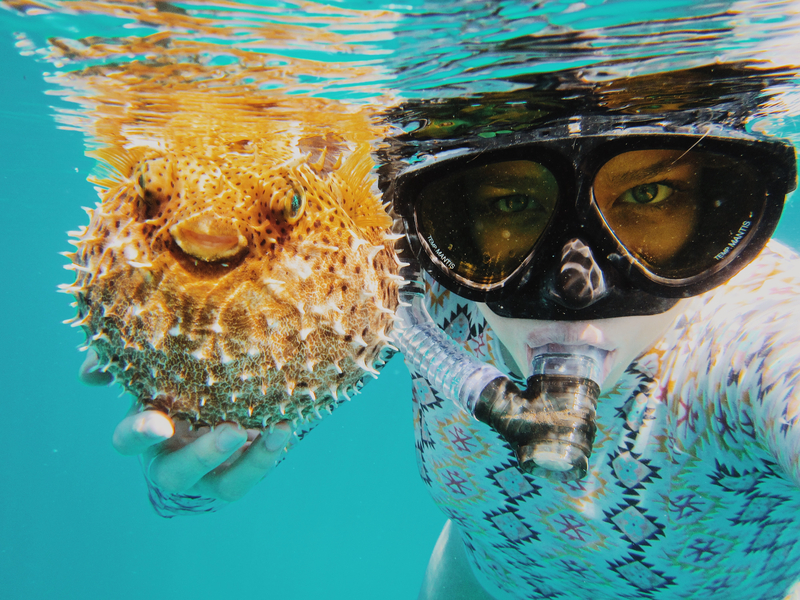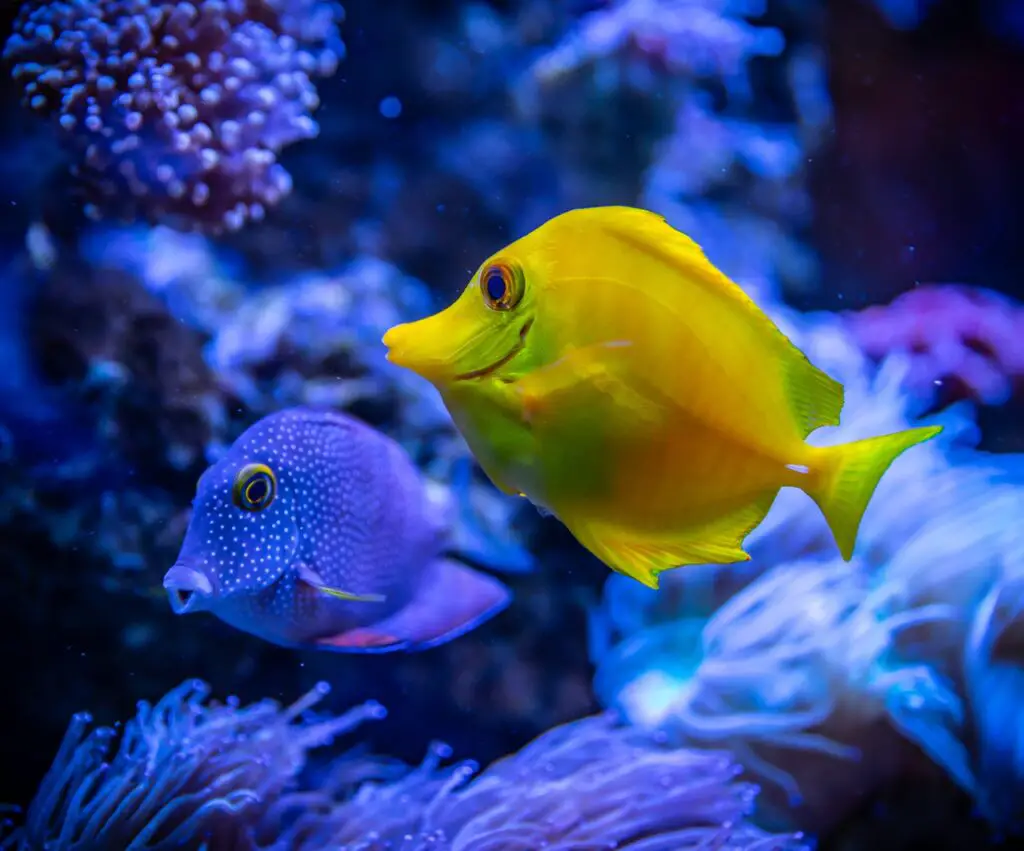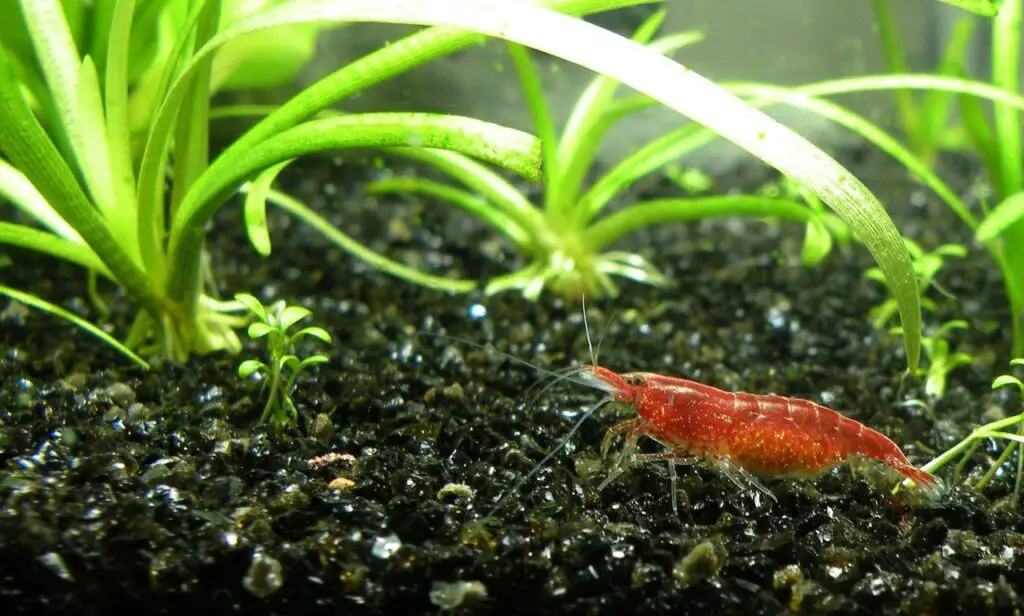Whenever I think of pufferfish, I automatically think of Mrs. Puff in Spongebob Squarepants. While Mrs.Puff would puff right up when stressed out, she was overall a fairly relaxed and optimistic character. Especially considering she had to put up with Spongebob during boating school!
Aside from fun cartoons, pufferfish are one of the most interesting creatures in our oceans. While Mrs. Puff was never terribly dangerous, it often crossed my mind whether or not pufferfish are poisonous to touch.
Yes, almost all kinds of pufferfish are extremely poisonous to touch. In fact, the toxin of pufferfish is more deadly to humans than cyanide.
In this article, I will go into more detail about pufferfish and what makes them so very deadly.
The Pufferfish
More commonly known as blowfish, pufferfish are found in both tropical and subtropical ocean waters. Some species of pufferfish also live in fresh and brackish water.
Pufferfish will quickly inflate themselves into the shape of a ball to ward off predators. Pufferfish contain a very toxic substance that not only makes them taste terrible to their enemies but is usually deadly.
And that toxin is worse when it comes to humans.
Why Do Pufferfish Puff Up?
The pufferfish is not a very good swimmer, which makes it vulnerable to enemies. Because they are not fast, instead of trying to escape a predator, they instead puff up. They do this by ingesting very large amounts of water and air into their bellies.
The belly becomes almost like an elastic and inflates like a ball, making the pufferfish double in size.
The pufferfish can inflate even after it’s been consumed by a predator so often that the predator may find itself with a mouth full of foul-tasting, spikey flesh instead of a tasty treat.
Are Pufferfish Dangerous?
Pufferfish contain tetrodotoxin, a toxin that is 1,200 times more deadly to humans than cyanide. One puffer fish has enough poison to kill 30 full-grown adults.
Tetrodotoxin is also found in balloon fish, sunfish, certain types of toads, globefish, porcupine fish, toadfish, and swell fish. It is one of the most deadly toxins found in the animal world.
And there is no antidote.
What Part of the Pufferfish is Toxic?
The deadly parts of the pufferfish include the ovaries, testes, liver, intestines, and skin. If the fish is not properly cleaned and prepared by a highly skilled chef, the skin will also become contaminated.
Cooking or freezing the toxic parts of the fish will not destroy it. In fact, doing so may result in the toxins spreading to the skin faster.
Can I Touch a Pufferfish?
You should never touch a pufferfish. Even experts in the field need to use extreme caution if they come across a pufferfish. Their spine, which is covered in spikes, contains tetrodotoxin, which is deadly.
If you see a pufferfish puffed out, avoid it at all costs.
What Happens if You Get Poked by a Pufferfish?
While toxins are generally found in the organs and skin of pufferfish, getting poked by one should be treated as an emergency.
Can You Hold a Puffer Fish?
While they might be nice to look at, you should never hold or touch a puffer fish because of their toxicity.
What is Fugu?
Fugu is simply the Japanese word for pufferfish. In Japan, this is an expensive and tasty treat. But it must be prepared by a highly skilled fugu chef. Folks who consume pufferfish do so willingly as they are considered a delicacy in parts of Asia.
Fugu is often served in sashimi and sushi dishes and is only done after the chef has cut the flesh in a certain fashion to avoid the toxin.
Is Consuming Fugu Deadly?
Roughly 50 people a year die from the toxins found in the pufferfish’s ovaries, testicles, livers, intestines, and skin and hundreds more become critically ill, only recovering with immediate medical attention.
If fugu is served incorrectly, it can be fatal. Fugu poisoning is usually caused by it being improperly prepared
What Happens in Fugu or Pufferfish Poisoning?
The pufferfish toxin, tetrodotoxin, caused swelling and paralysis of the lips and tongue. It also causes prickling and numbness all over the body, along with a fast heart rate, low blood pressure, and general muscle paralysis.
Tetrodotoxin also paralyzes the diaphragm, compromising breathing in the person who consumes it. The toxin blocks the sodium channels in the body, preventing impulses from being relayed from the neurons to the muscles.
This causes the muscles in the respiratory system to fail, leading to arrest and possible death.
Pufferfish poisoning generally sets in within 10 to 45 minutes but can take up to several hours. Death from pufferfish poisoning can strike as quickly as 20 minutes after exposure but can also take up to 24 hours.
Folks who survive the first 24 hours after being poisoned will generally recover, but it can take several days.
What are the Symptoms of Pufferfish Poisoning?
- Numbness
- Paresthesia of the lips and tongue
- Facial paresthesias
- Extremity Numbness
- Headache
- Lightheadedness
- Intense Sweating
- Dizziness
- Excessive Salivation
- Nausea
- Vomiting
- Diarrhea
- Abdominal Pain
- Motor Dysfunction
- Breathing Difficulty
- Abnormal Heart Rate
- Low Blood Pressure
- Fixed and Dilated Pupils
- Coma
- Seizure
- Respiratory Arrest
How is Pufferfish Poisoning Treated?
If pufferfish poisoning is suspected, vomiting should be induced if the person is alert and it has been less than three hours. If vomiting occurs on its own, the person should be turned on their side.
Medical attention is necessary as treatment will need to continue in the hospital. Once the person’s breathing has been secured, their stomach may need to be pumped. The patient will be monitored closely for cardiac rhythm, low blood pressure, and respiratory function.
Conclusion
The pufferfish is certainly one of nature’s most interesting creatures, with good reason. They are incredibly toxic, not only to other fish but to humans as well.
You should never touch a pufferfish and if you do consume one, make sure it has been prepared by a skilled chef, which you will likely not find in the United States.



